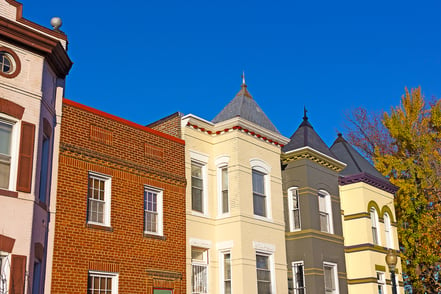Even contractors sometimes use the terms remodel, renovate, and restore interchangeably, though these terms have entirely different meanings. When working on a home in a historic district, it’s vital to understand the difference to stay in compliance. Think about these terms when determining your goals with your historical home improvement project.
Most historic home improvement projects include two or more aspects of these three approaches. Which are the best fit for you?
Remodel
Remodeling means to convert or change the form or structure of a room or building. Remodeling is most interested in changing the shape or purpose of space to something completely new. Here are some remodeling examples:
- Changing one room’s use or purpose: turning a garage into a spare bedroom, a basement into a bar and game room, a porch into an office, or a shed into a tiny guest house.
- Adding AC, heat, plumbing, windows, or doors where there once was none.
- Adding square footage to a room, floor, or building.
- Gutting or adding rooms, changing, adding, moving, or removing walls
- Adding a 2nd story floor or raising a roofline or ceiling.
Renovate
Renovation means to return a structure to its former condition but is not concerned with renewing the original style or architectural detail of a building. You fix what was there and add new items or pieces. Renovation often removes outdated items and replaces them according to current styles and conveniences. Some renovation examples:
- Updating obsolete windows to newer double-paned versions.
- Updating a kitchen or bathroom with newer modern appliances and cabinetry.
- Replacing old linoleum with interlocking laminate flooring.
- Replacing hardwood flooring with ceramic or porcelain tile.
- Removing a clawfoot tub and replacing it with a glass-enclosed shower and rainfall head.
Restore
Restoration takes the opposite approach from renovation. The goal is to return the structure to a particular period condition. The outcome is a home or facility that looks and functions as close as possible to the original structure. A fully restored structure leaves no trace of style or technology that did not exist when the home was first built. If the original house did not have a dishwasher or AC, you would not put them into a home being fully restored. Here are examples of restoration:
- Repairing and reconditioning original fixtures, drawer, and cabinets pulls or replacing anachronistic ones with found, period-correct replacements or the originals’ replicas.
- Removing asbestos or vinyl siding to expose, repair, and refinish the original brick.
- Stripping painted woodwork, trim, and built-ins and then staining them to the original finish.
- Ripping out carpeting or layers of laminate to expose and refinish wooden flooring in a Victorian home.
- Removing a standing shower and replacing it with a clawfoot tub.
- Removing drop-ceilings and contemporary ceiling lighting.
- Taking out an electric furnace and replacing it with a wood-burning stove.
- Replacing original outer doors and removing screens doors.
The differences among remodeling, renovating, and restoring a home can impact permits, cost, neighborhood impact, convenience, comfort, and home value, so it’s essential to make informed and wise decisions about how you will approach your home improvement projects.
When updates and repairs to your old home include a brick exterior, get in touch with Renaissance Development. You can be confident that the work you invest in today will improve the value and integrity of your home for decades to come. Schedule your consultation today.
Feb 19, 2021 12:49:17 PM


